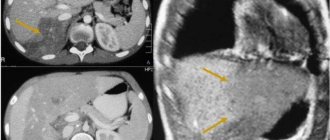Hyperhidrosis is a disease associated with excess sweat production. It appears in various parts of the body. But most often the back, armpits, palms, legs and face suffer from pathological symptoms.
In a normal state, a person activates sweating under the influence of heat or other external factors, or with increased physical activity. People who sweat profusely notice increased moisture in certain areas, even when at rest.
The disease requires mandatory consultation with a doctor. He will help identify the causes of hyperhidrosis and prescribe treatment in accordance with the factors that provoke active sweat production.
The essence of pathology
This disease is usually understood as a reaction associated with an increase in sweat production as a result of special emotions. This type of hyperhidrosis is typical for especially emotional people and is observed at the time of experience.
Deviations in the functioning of the autonomic system lead to the problem . Sweating can have varying degrees of severity and occurs in any zone or in a specific area. In this way, only the head, armpits or arms may suffer.
Sweating can be caused by fear, physical exertion, high irritability or nervous experiences.
However, the exact reasons for the development of pathology cannot be established. Damage to the sympathetic nerve, which is responsible for the size of the pupils, heart rate, etc., can lead to damage to the autonomic system.
It has not been possible to determine the factors that influence abnormal sweating. There is an assumption that the sweat glands do not react correctly to the release of adrenaline entering the blood. There is also a version about hereditary lesions of the vegetative center.
Symptoms of hyperhidrosis
Many people note that excessive sweating, the causes of which were listed earlier, is quite common in certain areas of the body. Some people's feet sweat a lot, while others' faces sweat a lot. Cases of widespread sweating are also common.
Symptoms of increased sweating appear quickly and are not difficult to identify:
• The skin in places where hyperhidrosis occurs when touched feels not only cool, but also moist.
• Feet and hands may have a bluish tint, as evidence of poor circulation in the extremities.
• Increased sweating can also be accompanied by bacterial and fungal diseases. It is bacteria and fungi, feeding on the waste products of the body on the skin, that create the smell.
• Sometimes sweat has a special smell due to toxic substances released by the glands. In this way, the body tries to remove the poison from the body faster.
• In some cases, sweat may have a color, but this is observed only in cases where a person works in chemical industries.
Excessive underarm sweating
For some people, this phenomenon has actually become a big problem. But what are the causes of excessive underarm sweating? In the summer season, this can easily be explained by abnormally high temperatures. Physical activity, stress, which is accompanied by the intake of liquid or food - all this causes sweating.
Quite often, to reduce sweating, it is enough to review your diet, diet and physical activity. Vitamin D deficiency also affects the body's secretions.
It is very important to pay attention in time to the smell of sweat. Even foods such as onions, garlic, and spicy dishes can cause abnormal functioning of the sweat glands. You should also avoid alcohol and too salty foods. If this helped you, it means that your lifestyle was affecting your increased sweating of the armpits.
Obesity quite often causes profuse sweating in the groin, armpits, collar and face. This is explained by the body’s desire to cool the locations of vital organs under load in the form of excess weight. Therefore, in this case, increased sweating of the armpits is treated with physical activity and a diet for weight loss. If obesity is caused by hormonal imbalance, you need to undergo treatment for the source of the symptoms - that is, diseases of the endocrine system.
Hyperhidrosis of the legs
This problem occurs quite often, but it can be completely solved by pedantically observing the rules of personal hygiene. But there are times when the problem becomes extremely noticeable to others and greatly affects a person’s life, work, family, and friends. An unpleasant odor quickly becomes a “calling card”, ruining life and health.
Considering that increased sweating of the feet is often accompanied by bacterial and fungal diseases, the risk of infection from such a person increases if the problem is not solved.
The causes of sweating lie in the huge number of sweat glands on the feet, which begin to work when “unfavorable times” come. Factors that cause profuse sweating of the feet:
- Long walk.
- Narrow, uncomfortable shoes.
- Socks too warm.
There are actually a huge number of reasons. But the result is the same - blood circulation in the lower extremities is impaired and the body simply tries to release more moisture in order to reduce swelling, give the feet more free space and reduce the load.
In some cases, due to increased sweating, an altered condition of the skin between the fingers may be observed. This is expressed in the appearance of calluses, cracks, wounds, blisters, and areas of inflammation. This is fraught with consequences - infectious diseases may develop. In this case, a dermatologist will help you solve the problems that have arisen.
Increased sweating throughout the body
Whole body hyperhidrosis occurs in a number of cases that are not related to temperature or physical activity. Causes of increased body sweating and diseases that cause this symptom:
• Endocrine diseases.
• Cardiovascular or pulmonary diseases.
• Infections accompanied by high fever.
• Mental, nervous diseases.
• Hereditary factor.
The latter, by the way, can be defined simply - this is a feature of the body as a whole and its secretion system, in particular, which is inherited and is innate. A similar factor can be observed within one particular family, and among several of its representatives. Sometimes such sweating can occur intermittently, for example, only at night.
Sweating in the head area
This type of sweating is most often noted by strangers. Most often, sweating of the head accompanies nervous tension - worries, worries. That is, this is a natural reaction to irritation of the nervous system.
Discharge in the frontal region is most often a sign of an unstable emotional state of a person. This is the easiest way to calculate fear, tension, shame, and so on.
If a person is absolutely calm, but sweating of the head continues to be observed, then one should be examined for metabolic disorders.
This symptom is also accompanied by traumatic brain injuries. As we mentioned earlier, the face, armpits, collar area and groin area may sweat in overweight people.
Night sweats
If increased sweating is observed at night or when a person is sleeping, but it cannot be explained by heredity, then the roots should be looked deeper. In this case, you need to do everything necessary to find out the root cause of the symptom.
Just night sweats, when a person does not sleep, is usually caused by quite serious pathologies:
• Tuberculosis.
• AIDS.
• Lymphogranulomatosis.
• Dysfunctions in the thyroid gland.
• Obesity or diabetes.
In female audiences, such sweating may occur during pregnancy or breastfeeding. This phenomenon is quite common and will pass over time when the hormonal levels “calm down”.
They sweat in their sleep due to hormonal problems, metabolic disorders, during stressful situations accompanied by nightmares or poor sleep, mental imbalance. This can also occur due to too high an outside temperature, proximity to heating devices, or excessively warm bedding. If you are “breaking into a sweat” because of the content of your dreams, then you need to take a course of sedatives.
Diagnostic tests
To get rid of the disease, you need to consult a doctor in time. If sweating occurs, the following specialists can help:
- Psychologist - helps to identify factors that affect the psychological aspect of the occurrence of hyperhidrosis.
- A dermatologist will help identify the primary signs of hyperhidrosis. This specialist selects physiotherapeutic techniques and suitable antiperspirants.
- Cosmetologist – helps patients who are afraid to undergo Botox injections. This method of therapy allows you to achieve a prolonged effect that lasts for 6 months.
- The surgeon removes the sweat glands, which stops the production of sweat.
In any case, before starting therapy, it is necessary to conduct a detailed diagnosis.
It includes the following studies:
- clinical blood test;
- hormonal study;
- determination of blood sugar volume;
- fluorography.
What is this, sweating?
To understand the causes of this condition, it is necessary to determine its physiological concept. The secretion of a special secretion by the sweat glands is an important function of the body. In this way, metabolic products come out. Therefore, a person sweats in a hot room or when playing sports.
Sweat glands work constantly, i.e. secretion is released regularly, but is not visible to the naked eye. But excessive production is noticeable, which may be a sign of serious violations. In the area of increased sweating, an unpleasant odor is felt, which appears as a result of the activity of pathogenic microflora. Bacteria that multiply in sweat not only cause an unpleasant odor, but also contribute to the occurrence of inflammation.
Sometimes people have congenital excessive sweating, in which case this is a feature of the body. No special treatment is required. The situation is alarming when a woman’s secretion production unexpectedly increases.
Treatment
Successful treatment of pathology is impossible without the use of psychotherapy . Thanks to this, it is possible to cope with stress factors, increase resistance to them and normalize the emotional state.
Until a person overcomes this problem, hyperhidrosis will not disappear. As a complement to psychotherapy, you can use other methods - medication, folk, surgery.
Drug therapy
Since the emotional form of hyperhidrosis appears with increased anxiety in a person, experts advise taking sedatives . At home, you can drink herbal infusions of motherwort, valerian, and peony.
In addition, you can use special sedative medications. However, such drugs should be prescribed exclusively by a doctor. This category includes Klonopin, Prozac.
Attention! When using these substances, you need to take into account the likelihood of adverse reactions. These include dry mouth, constipation, and increased drowsiness. Sometimes tachycardia and temporary visual impairment develop.
To cope with such hyperhidrosis, therapy with these drugs must be carried out on a continuous course. This must be done for 2-4 weeks.
Factors causing the development of pathology in women
Why is there increased sweating? There are factors that cause hyperhidrosis only in women. This is due to the hormonal changes that occur in their body. These include:
- Pregnancy, especially in the first trimester, when hormonal changes in the female body are most active.
- Before the onset of menstruation, due to changes in hormonal levels, not only fatigue and weakness occur, but also bouts of sweating.
- During menopause, hormonal changes also occur in a woman’s body, so along with attacks of lethargy and irritability, an increase in sweating also occurs.
This condition causes discomfort. In 15% of women, attacks of hyperhidrosis are especially pronounced and affect their usual lifestyle and performance.
Some causes of excessive sweating in women are classified as physiological. Any of them is accompanied by hormonal changes:
- During pregnancy, changes occur constantly. Increasing body weight also leads to increased sweating.
- During the postpartum period, large amounts of prolactin are produced; during menopause, estrogen production decreases.
After a certain period of time, all processes normalize and pass without medical intervention.
General recommendations for reducing sweating
To cope with excessive sweating, you need to follow these recommendations:
- Adhere to the rules of personal hygiene . All areas of the body that are constantly subject to severe sweating should be washed thoroughly with water every day. Then the problem areas are wiped dry and powder containing talc is applied. Thanks to this, it is possible to get rid of the smell of sweat and improve a person’s psychological state.
- Systematically use deodorants . Using these products, it is possible to hide the unpleasant odor and slow down the rate of decomposition of the components of sweat, since all these substances have antibacterial properties.
- Monitor the ambient temperature. In hot weather, you should wear light clothes. In any case, you should give preference to clothes made from natural fabrics.
Attention! To minimize the symptoms of this form of hyperhidrosis, it is enough to follow the suggested recommendations. It is also very important to adhere to a healthy lifestyle, make adjustments to your diet and exercise.
Common Causes of Excessive Sweating
Factors that can cause such a condition must be divided into general, characteristic of men and women, as well as specific - only for women. In this case, it is possible to establish the exact causes of the pathology.
Increased sweating of the body is divided into:
- Idiopathic form. Occurs for no particular reason.
- Secondary form. Is related to any disease.
Increased sweating can be caused by the following pathologies:
- Diseases of the endocrine system. Hormonal disruption, which causes an increase in the functions of endocrine organs, contributes to increased activity of the sweat glands. As a result, hyperhidrosis develops. Such pathologies include diabetes mellitus and ovarian dysfunction.
- Infectious diseases, regardless of the pathogen (viruses, bacteria, fungi). They usually occur with increased temperature and are accompanied by increased sweating.
- Heart disease also causes hyperhidrosis. These include heart attack and stroke.
- Diseases of the musculoskeletal system. Disturbances of metabolic processes in cartilage and joint tissues.
- Poisoning of an infectious or toxic nature is accompanied by increased sweating.
- Taking certain medications can cause hyperhidrosis, which is a side effect. These are the following drugs: insulin, morphine and others.
- Malignant tumors are also accompanied by increased sweating. This is lymphoma, Hodgkin's disease.
All these diseases are characteristic of both female and male representatives.
How to stabilize the nervous system?
To minimize the risk of excessive sweating, it is imperative to improve the functioning of the nervous system. To stabilize this process, we can recommend the following:
- Balance your daily routine . Every day you need to sleep at least 8-9 hours. Otherwise, lack of sleep leads to increased fatigue, weakness, and irritability. This leads to stressful situations, which only aggravates the patient’s condition. You definitely need to sleep at night. Therefore, people with disorders of the nervous system are not recommended to work at night.
- Playing sports is best in the fresh air . Walking, dancing, and skiing are very useful in this case. Running, aerobics or swimming are equally effective. If arterial hypertension is observed, it is important to monitor the moderation of exercise. As the body gradually gets used to sports, you need to change the types of loads. At first, you can jog for 2-3 months, then move on to swimming, and then ride a bike.
- Eat properly . People with problems with the nervous system are strictly prohibited from strict diets and fasting. This worsens the course of the disease and leads to its relapse. In this case, you should definitely exclude alcoholic drinks. The same goes for strong coffee. It is best to drink juices, tea, cocoa. The basis of the diet should be plant foods - fruits, vegetables, herbs. It is very useful to eat cereals. At the same time, the amount of fat and sugar should be minimized. All this has a beneficial effect on metabolic processes.
Types and causes of hyperhidrosis
Hyperhidrosis can be local and generalized (general). In the first case, certain areas sweat: most often the arms, legs or armpits, less often the face and head. With general hyperhidrosis, there is increased sweating throughout the body.
Axillary hyperhidrosis most often affects women. Increased sweating of the palms and soles occurs equally in both sexes. These areas of the body most often sweat at the same time.
There are primary and secondary hyperhidrosis. The first one is local in most cases. It develops idiopathically, that is, without an obvious reason.
Secondary hyperhidrosis is most often general and almost never local.
Primary local hyperhidrosis begins to appear during puberty. Scientists note a certain genetic predisposition to its development. Secondary hyperhidrosis is a consequence of certain pathologies in the body, most often serious.
Among the common reasons for its development:
- diabetes;
- menopause;
- hyperthyroidism;
- infections;
- intoxication;
- pregnancy;
- parkinsonism;
- malignant formations;
- tuberculosis;
- damage to the nervous system;
- taking certain medications (antidepressants);
- withdrawal syndrome in drug addiction and alcoholism.
Physiotherapy methods
Physiotherapeutic procedures have an excellent effect in treating excessive sweating in women. These include methods such as contrast showers and pine-salt baths. They have a general strengthening effect and reduce the excitability of the nervous system.
Particularly effective is electrosleep, a method that is based on the effect of low-frequency impulses on the brain. The procedure calms the nervous system and has a sedative effect.
One of the most well-known methods includes therapeutic electrophoresis, during which problem areas are exposed to electric current together with medications. As a result, the area with increased sweating is dehydrated, and the active components penetrate the skin and reduce sweat production for up to 20 days.
Methods of therapy
After identifying the causes of excessive sweating in women, treatment will include the following methods:
- Tablets that inhibit the activity of the sweat glands. They must be used with caution due to side effects (constipation, dry mouth) and contraindications (glaucoma, etc.).
- Antiperspirants that temporarily block the secretions of sweat glands. The product is applied to clean and dry skin before bedtime. It is best if such funds are selected by a specialist.
- Ointments with a drying effect. These include Teymurov ointment, which is applied to pre-dried skin 2 times a day. It has no contraindications, so the product can be used on any part of the body.
- Botox injections. 10-20 injections are given to the area of increased sweating to block brain signals that are sent to the sweat glands. Therapy is repeated after six months.
- Iontophoresis. During the procedure, the palms and feet are immersed in water through which an electric current is passed. A damp pad is applied to the armpits. The process itself is completely painless, but can cause irritation of the skin. Several sessions are required over the course of a week, lasting 20 minutes. Then the interval between them increases to 1-4 weeks.
- In case of hormonal imbalances, the doctor also prescribes special therapy.
- During surgery, part of the sweat glands is removed through a small puncture. It is performed under local anesthesia.
When determining the causes of excessive sweating, treatment consists of:
- Drug therapy.
- Physiotherapy.
- Using special antiperspirants.
Once a disease is diagnosed that causes excessive sweating, hyperhidrosis goes away completely.












